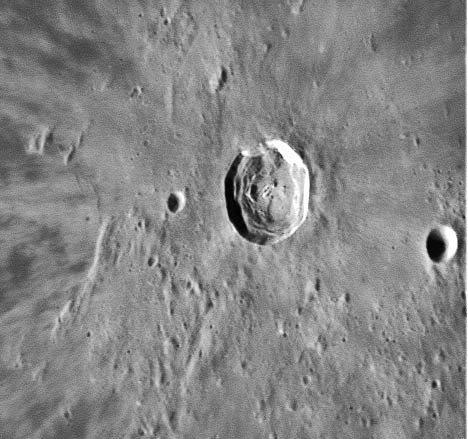Rayless Crater

Explanation:
Rayed craters are rayless at low illuminations, but this view of Kepler is intermediate between low and high so that both the topography and rays are visible. Kepler itself is a small (32 km diameter) and young complex crater.Its walls have collapsed and slid toward the floor, piling up both amorphous mounds and discontinous terraces. At the center of a small flat floor are a handful of central peaks. Keplers ray system differs from Tycho and some other craters in that at Kepler the rays emerge from a large bright area - perhaps 3-4 times the diameter of the crater; this seems to be an area completely covered by rays. The rubbly terrain that Kepler and its close-in rays cover is ejecta from the Imbrium basin-forming impact.
—
Chuck Wood
Technical Details:
Starmaster 18" Newtonian + DMK-21FO4 camera, 30FPS, stack of 660 frames from 2100.
Related Links:
Lunar Orbiter III View
Rukl Plate 30
